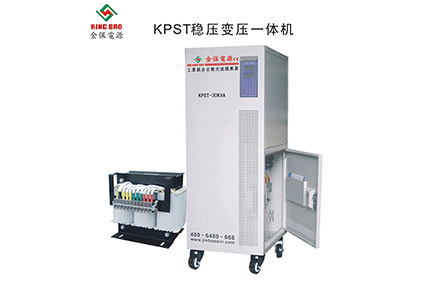4News -> Technical技术支持

According to the different output properties of the voltage regulator, the voltage regulator is generally divided into AC voltage regulator (AC voltage regulator power supply) and DC voltage regulator (DC voltage regulator power supply) two categories. The following focuses on DC regulated power supply, referred to as regulated power supply.
According to the working state of the regulating tube, the regulated power supply is often divided into two categories: linear regulated power supply and switching regulated power supply. In addition, there is a small power supply that uses a voltage regulator.
Switching regulator
Switching regulators use output stages that repeatedly switch the "on" and "off" states to produce an output voltage in conjunction with energy storage components (capacitors and sensors). Its adjustment is achieved by adjusting the switching timing according to the feedback sample of the output voltage. In a fixed-frequency regulator, the switching timing is regulated by adjusting the pulse width of the switching voltage, which is called PWM control. In a gated oscillator or pulse-mode regulator, the width and frequency of the switching pulse remain constant; however, the "on" or "off" of the output switch is controlled by feedback.
Depending on the arrangement of switches and energy storage components, the resulting output voltage can be greater or less than the input voltage, and multiple output voltages can be generated with a single regulator. In most cases, pulsed (step-down) switching regulators convert power more efficiently than linear regulators at the same input and output voltage requirements. Compensation type - High precision AC compensation type voltage regulator power supply (single-phase 0.5kVA and above, three-phase 1.5kVA and above) with compensation transformer, 110V output.
Linear voltage regulator
LDO is a linear voltage regulator. Linear regulators use transistors or FETs operating in their linear region to subtract the excess voltage from the applied input voltage to produce a regulated output voltage. The so-called voltage drop voltage refers to the minimum difference between the input voltage and the output voltage required by the regulator to maintain the output voltage within 100mV above and below its rated value. LDO (Low voltage drop) regulators with a positive output voltage typically use a power transistor (also known as a transfer device) as a PNP. This transistor allows saturation, so the regulator can have a very low voltage drop voltage, usually around 200mV; In contrast, conventional linear regulators using NPN composite power transistors have a voltage drop of about 2V. A negative-output LDO uses an NPN as its transfer device, which operates in a similar mode to a PNP device with a positive output LDO.
Newer developments use CMOS power transistors, which are capable of providing the lowest voltage drop voltage. With CMOS, the only voltage drop through the regulator is caused by the ON resistance of the load current of the power supply device. If the load is small, the pressure drop produced in this way is only a few tens of millivolts.
Voltage regulator for laser cutting machine
According to the requirements of the use of high-power laser cutting machine, combined with the current situation of China's power supply, regulators should be strictly formulated in line with the use of laser cutting machine, and energy-saving products developed for stable AC voltage. When the power supply voltage of the distribution network fluctuates or the load changes, it can automatically ensure the stability of the output voltage. It must have the characteristics of large capacity, high efficiency, wide voltage regulation range, no additional waveform distortion and phase shift, fast strain time and stable. With short circuit, mechanical failure and other perfect alarm protection function, while the volume should be as compact and compact as possible, easy to use.

